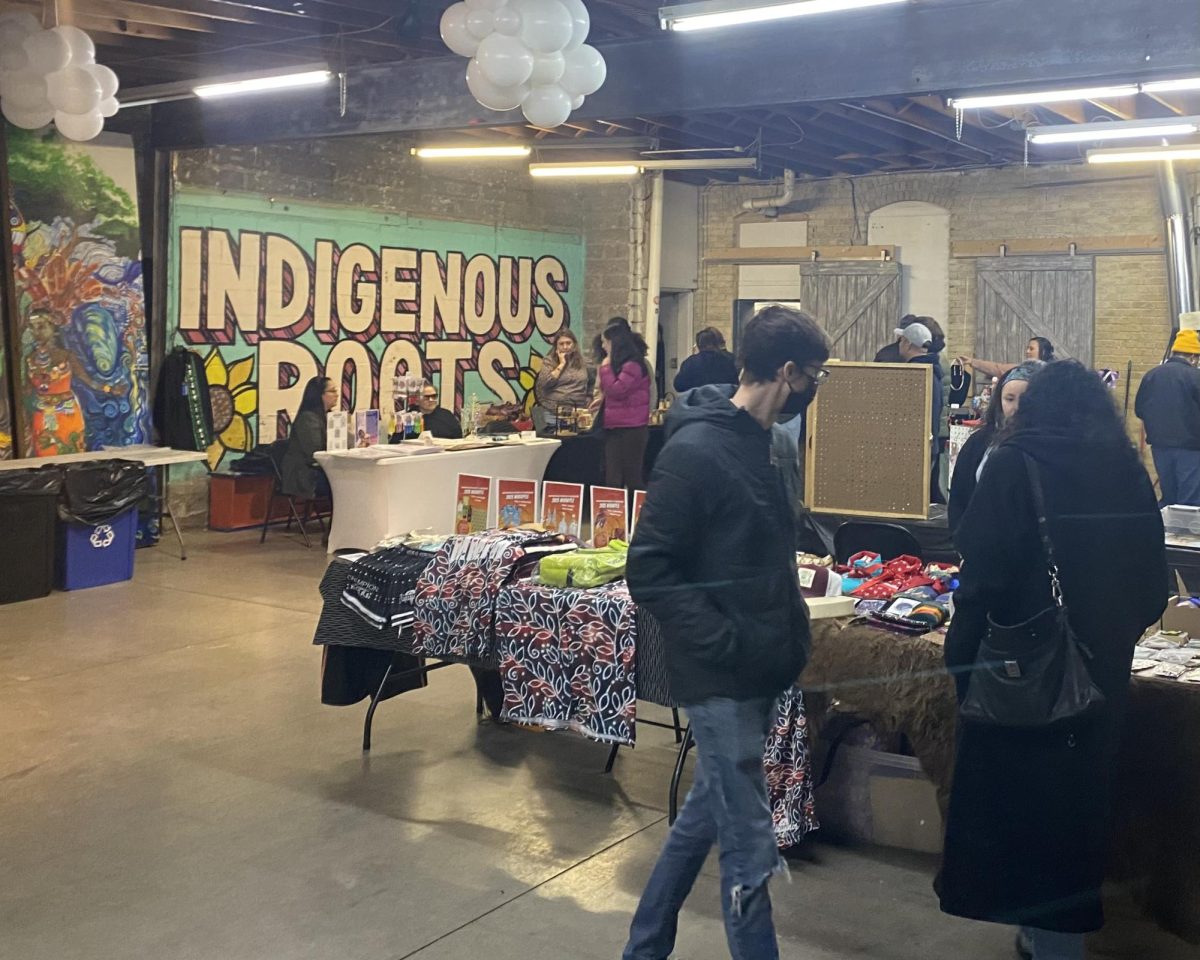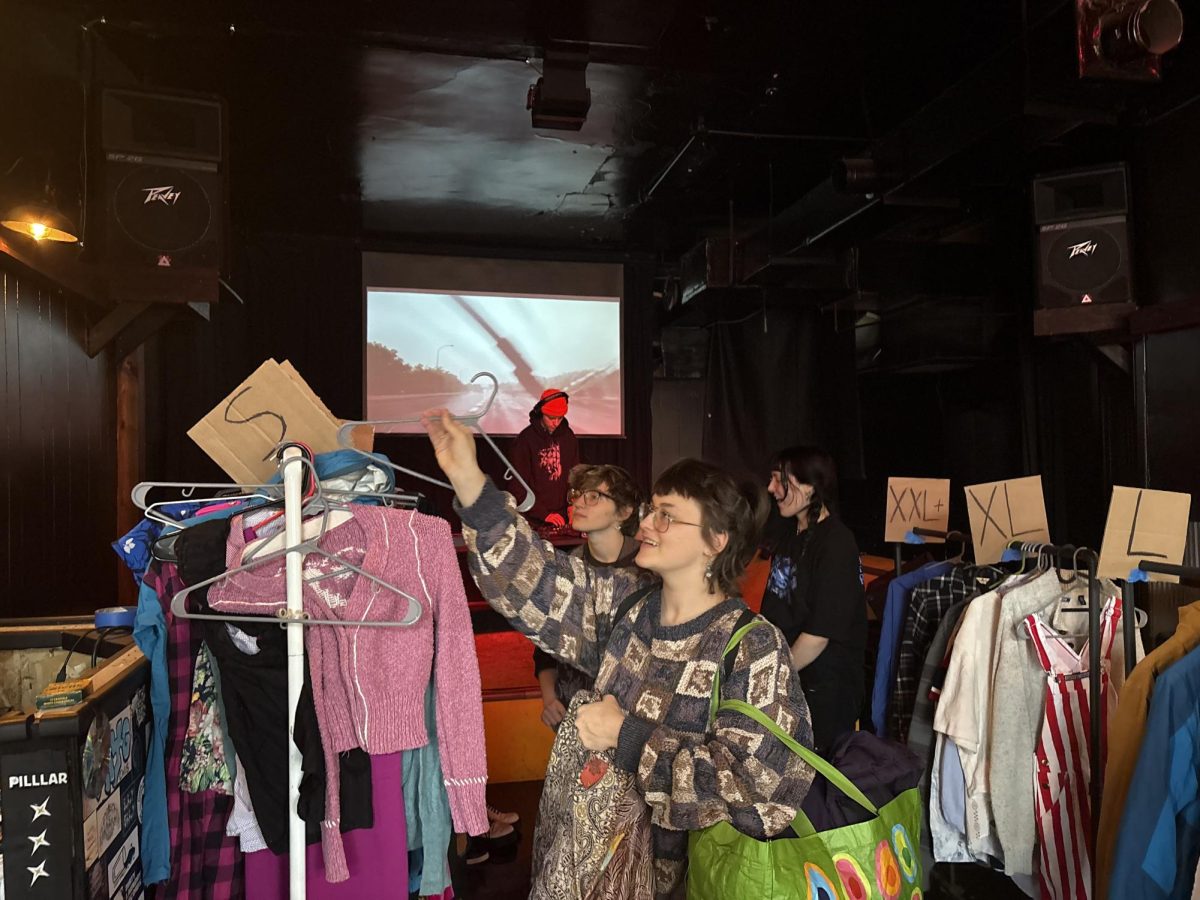There are a plethora of fantastic bands around here. Some regularly sell out large theaters and others can’t pack the room at Eclipse, but any way you cut it, we ought to change the license plate slogan from “Land of 10,000 Lakes” to “Land of 10,000 Bands.”
The Twin Cities have given the world a lot of great music over the years. Everybody knows about Prince, but the Replacements and Husker Du still have legions of fans around the world despite their respective and long lamented demises. And despite the numerous acts that have gone on to worldwide success, the perception remains that the Twin Cities as a music scene has never fully become the “next big thing.”
Notwithstanding the recent incipient success of a few local bands – Dillinger Four, Motion City Soundtrack and local pop chameleon Sean Tillman – there seems to have been no move by the record industry to descend on the Twin Cities.
So why is it that some scenes seem to blossom while others continue on as they have been, limited to little more than entertaining locals? It’s not altogether a simple thing.
In the case of some cities there are such strong local institutions that a scene drives itself to national prominence. The best examples of this are the Washington, D.C., punk and hardcore scene and Olympia, Wash.’s Kill Rock Stars and K Records labels. In both cases there are a number of talented bands that group around one or two rapidly expanding labels. Also, there are one or two standout bands whose success came earlier or was more widespread than the rest.
In the Washington, D.C., example, the label is Dischord and the bands are Minor Threat and, later, Fugazi. These bands’ influences are visible in the music and aesthetics of today’s bands. Beyond that, the work they and their labelmates did formed a scene in Washington, D.C., which was able to persist and grow without the intervention of external label forces. The scene grew up around the label that these bands more or less supported by themselves. Venues, record shops and a fiercely local attitude among bands and fans propelled the scene to the point that local shows often outsold national touring bands.
The Olympia scenario is a bit more unique because of the factors that conspire to make it work. Olympia is a small town with a famously Bohemian college. Add to this a couple of indie impresarios like Calvin Johnson and Slim Moon, proprietors of K Records and Kill Rock Stars, respectively. Take a couple of early successes for these labels that lead them each to a degree of national recognition and you have a situation in which a variety of bands flourish in a small community with disproportional representation in the national indie milieu. The college ensures a regular inflow of new people to the area, providing both fans and musicians. The big acts that come out once in a while – Unwound, Elliot Smith, Sleater-Kinney, Beat Happening and Modest Mouse – provide notoriety and sales, thus supporting the efforts of their smaller, lesser-known counterparts.
The little town/big scene that happened for Olympia seems like an anomaly, but one must consider that it is not the only example, and other small-to-medium-sized cities have had successes. Others include Chapel Hill, N.C., Athens, Ga., and, more recently, Omaha, Neb.
What happens when a scene’s entry to the national stage is managed by the major labels?
In the frenzy to find the “next big thing,” labels have decimated local scenes, sequestering anyone with talent. When you have a situation like Nirvana’s phenomenal success with 1991’s “Nevermind,” in which a fairly unknown band sells a gazillion copies of a record that goes from an indie label to a major label to a legend, you get people who want to re-create its success. Thus, Seattle was mined and depleted in the period following the big grunge explosion. Everyone who sounded remotely like whatever labels thought was grunge was given a contract and shoved on a tour bus. Before long, things fell apart. Only a few bands were still intact, Nirvana famously not among them. Viewers of the 1996 film “Hype!” and readers of super-producer Steve Albini’s article “The Problem With Music” might already have come to these conclusions.
Another thing to consider in the context of the present moment in music is that we’re living through a low point in our history. Mainstream pop music is unlistenable, mainstream politics are unthinkable, the economy is unprofitable – and that usually means change is on the horizon. The music that is dominating the charts right now is the prefab best that major labels have to offer: Britney, Justin and the rest of the crew that send preteens swooning and rockers vomiting have to live out their utility sooner or later. Whither the New Kids On The Block? These bands are assembled by a team of advertisers, hack songwriters and label bankers, then over-produced until they sound acceptable. Bands who have been taught to dance like chained bears cannot adapt to changing musical environments and tastes.
There are as many theories as there are bands or lakes as to why the Twin Cities never blows up. Some say weather, some geography, some just refer to general apathy. Others point to our noncoastal, small-city vibe as not cool enough to keep up with New York, Los Angeles or the other big scenes. These might explain parts of the bigger picture, but none account for everything in and of themselves.
There are a couple of features of the bigger idea of a “next big thing” that might be more instructive in figuring out our town. First, there is no such thing as an authentic “next big thing.” Usually when a scene comes to national prominence it is a creation of media, advertising and the record industry aimed at getting you to buy more records. Nobody wants to miss the next trend, so the paranoia that drives hipness at every level goes a long way to move units of a given record.
Next, the Twin Cities definitely responds to trends, but the diversity of music by bands based in this area seems to preclude grouping them into a profitable genre, like what happened with grunge and the Northwest. In a city where the biggest draws are as varied as Fog, Dillinger Four, Atmosphere and Happy Apple, it might be more of a challenge for record labels to swoop in and plunder the area. There are major label acts that have come out of the Twin Cities, but their vitality within or importance to local music is negligible, and none have created a stir loud enough to bring real interest from outside.
The Twin Cities’ resistance to being the next hot spot is not a shortcoming. Rather, the factors that keep us from being a hot property are like immunities to a virulent and deadly disease. Major labels kill scenes, exploit bands and generally destroy art, culture, thought, creativity and everything good in any town they show up in. Bands move to this area all the time to capitalize on what they see as either a chance to advance, a move from a small town to a decent-sized city or just to be part of a scene that, while not a den of major label dreck, is still regarded nationally as vibrant, vital and on the cutting edge of music. The inflow of artists keeps new people and styles coming in, and the University brings young people from across the region into the cities every year. There are several venues of various sizes, some closely identified with a particular style, others simply rooms to be filled with people and sounds of all kinds. Also, we’re simultaneously isolated and connected. We are far enough out of the way that many bands skip playing the Twin Cities, but those truly interested in music will know that the area is worth the northward swing to play. We have 100 percent access to everything via the Internet and other still less-controlled media outlets, we can see the trends and choose to adapt or ignore. These are our vaccines.
It turns out that we’ve got it pretty good here. New York, Los Angeles and Chicago are clogged with bands that still believe that unaffordable rent and endless slaving as nobodies in a bigger scene are necessary to be successful. Omaha and other cities might have it good today, but who really wants to live there and how long can it last? Moving your band as a strategy for breaking through might be what you need to do in your mind, but the facts seem to discount the necessity of moving, except to tour. In an age when anyone anywhere can have access to music from around the planet in seconds, the changes that are necessary are not with the home base of any given band, but with the mega-dinosaurs we call the majors and their incessant drive to kill the creativity in music and control all media.
Gabriel Shapiro welcomes comments at [email protected]







